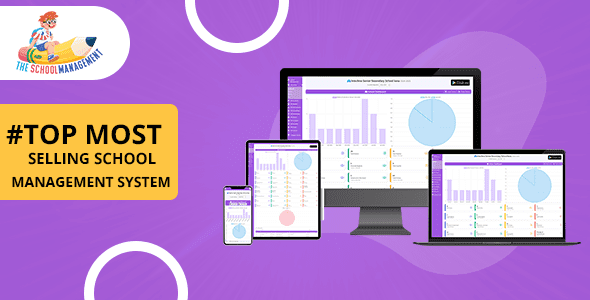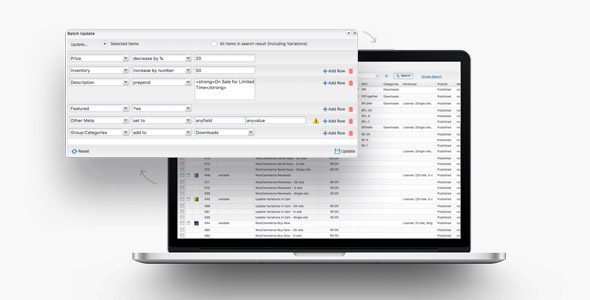Pofily – Woocommerce Product Filters 1.2.5 – SEO Product Filter

Discover the Power of Pofily – WooCommerce Product Filters 1.2.5 for Enhanced SEO and User Experience
If you’re running an online store with WooCommerce, understanding how to improve product discoverability and customer navigation is crucial. Pofily – WooCommerce Product Filters 1.2.5 emerges as a versatile tool designed to optimize your store’s filtering capabilities, thereby boosting your SEO performance and creating a seamless shopping experience for your customers. This comprehensive guide delves into the features, benefits, and best practices for leveraging Pofily to transform your WooCommerce store into a user-friendly, SEO-optimized platform.
What is Pofily – WooCommerce Product Filters 1.2.5?
Pofily is a powerful WordPress plugin tailored for WooCommerce stores, enabling store owners to add dynamic, customizable product filters. The latest version, 1.2.5, introduces advanced features that allow for detailed filtering options based on various product attributes such as taxonomy, reviews, price, stock status, and metadata. These filters are designed not only to enhance user experience but also to improve your store’s SEO by making products more discoverable through refined filtering and search engine indexing.
Key Features of Pofily – WooCommerce Product Filters 1.2.5
To understand how Pofily can revolutionize your WooCommerce store, let’s explore its core features in detail:
| Feature | Description |
|---|---|
| Multiple Filter Blocks | Create as many filter blocks as needed for different content types like product tags, categories, attributes, prices, reviews, and metadata. |
| Customizable Filter Terms | Use “Add all” and “Remove all” buttons for quick selection or deselection of filter terms, streamlining user interactions. |
| Label & Tooltip Customization | Replace default filter names with custom labels and tooltips to improve clarity and SEO relevance. |
| Display Options | Choose from checkboxes, radio buttons, buttons, images, color swatches, ranges, or range sliders for filter display. |
| Filter Placement | Decide whether filters appear as modals or on sidebars, offering flexibility in page layouts. |
| Design & Style Customization | Style filters with colors, sizes, icons, and directions to match your site’s aesthetics seamlessly. |
| Filter Menu Creation | Build comprehensive filter menus that enhance product navigation, making it easier for customers to find what they need. |
Benefits of Using Pofily for Your WooCommerce Store
Implementing Pofily provides multiple advantages that directly contribute to your store’s SEO and overall user experience:
- Enhanced User Navigation: Customers can quickly narrow down products based on their preferences, reducing bounce rates and increasing conversions.
- Improved SEO: Well-structured filters and metadata help search engines index your products more effectively, leading to higher rankings.
- Increased Engagement: Interactive filters encourage users to spend more time exploring your offerings, boosting sales potential.
- Flexible Design: Customizable styles ensure filters seamlessly blend with your website’s design, maintaining brand consistency.
- Time-saving Management: The intuitive interface allows for easy creation and management of multiple filters without technical expertise.
How to Maximize Pofily’s Features for Better SEO and Customer Satisfaction
1. Use Descriptive Labels and Tooltips
Replace generic filter names with descriptive, keyword-rich labels that clearly communicate their purpose. For example, instead of “Color,” use “Available Colors” to enhance relevance for search engines and clarity for users. Incorporate tooltips to provide additional context, helping customers make informed decisions.
2. Create Multiple, Targeted Filter Blocks
Design different filter blocks tailored to specific content sections or product categories. This targeted approach improves navigation and ensures customers find relevant products faster, positively impacting SEO by reducing bounce rates.
3. Optimize Filter Display Styles
Experiment with various display options such as color swatches for fashion items or range sliders for prices. A visually appealing and intuitive interface encourages interaction, leading to higher engagement and better SEO signals.
4. Incorporate Metadata Filters
Leverage metadata filters to allow filtering based on custom product data, such as materials, brands, or special features. These filters help search engines understand your product attributes better, enhancing discoverability.
Practical Implementation Tips and Best Practices
Step-by-Step Setup Guide
- Install and activate Pofily plugin from the WordPress plugin repository.
- Create new filter blocks based on your product attributes and categories.
- Customize labels and tooltips for each filter term to enhance clarity and SEO.
- Select display styles that align with your site’s design aesthetic.
- Decide filter placement—sidebar or modal—based on your layout.
- Test filters thoroughly to ensure they work smoothly and enhance user experience.
Best Practices for SEO Optimization
- Use descriptive, keyword-rich labels for filters.
- Ensure filter URLs are clean and can be indexed by search engines.
- Enable filters to generate unique URLs for filtered views, improving SEO and sharing.
- Combine filters with rich snippets and schema markup to boost search appearance.
Frequently Asked Questions (FAQs)
Q1: Is Pofily compatible with all WooCommerce themes?
Yes, Pofily is designed to work seamlessly with most WooCommerce-compatible themes. However, for best results, ensure your theme supports custom filters and sidebar widgets.
Q2: Can I customize the appearance of filters?
Absolutely. Pofily offers extensive styling options, including colors, sizes, icons, and display types, allowing you to match your store’s branding effortlessly.
Q3: Does Pofily support mobile responsiveness?
Yes. Filters created with Pofily are mobile-friendly and adapt to various screen sizes, ensuring a smooth experience for all users.
Q4: Will filters slow down my website?
Properly implemented filters with optimized settings should not negatively impact site speed. It’s essential to test and optimize filter performance, especially for large inventories.
Q5: Can I track filter usage for analytics?
While Pofily itself doesn’t provide analytics, integrating it with tools like Google Analytics allows you to monitor filter interactions and optimize accordingly.
Conclusion: Elevate Your WooCommerce Store with Pofily
In the competitive world of eCommerce, providing an intuitive and efficient shopping experience is key to success. Pofily – WooCommerce Product Filters 1.2.5 stands out as a comprehensive solution that not only enhances user navigation but also significantly boosts your store’s SEO performance. By leveraging its flexible features—such as customizable filter blocks, multiple display options, and metadata filtering—you can create a more engaging and discoverable online storefront.
Investing in robust filtering options like Pofily pays off by increasing customer satisfaction, reducing bounce rates, and improving your site’s search engine rankings. Whether you’re a seasoned developer or a store owner with minimal technical skills, Pofily offers an easy-to-use, highly customizable platform to elevate your WooCommerce store to new heights. Start implementing these filters today and witness the transformation in your online sales and visibility.








